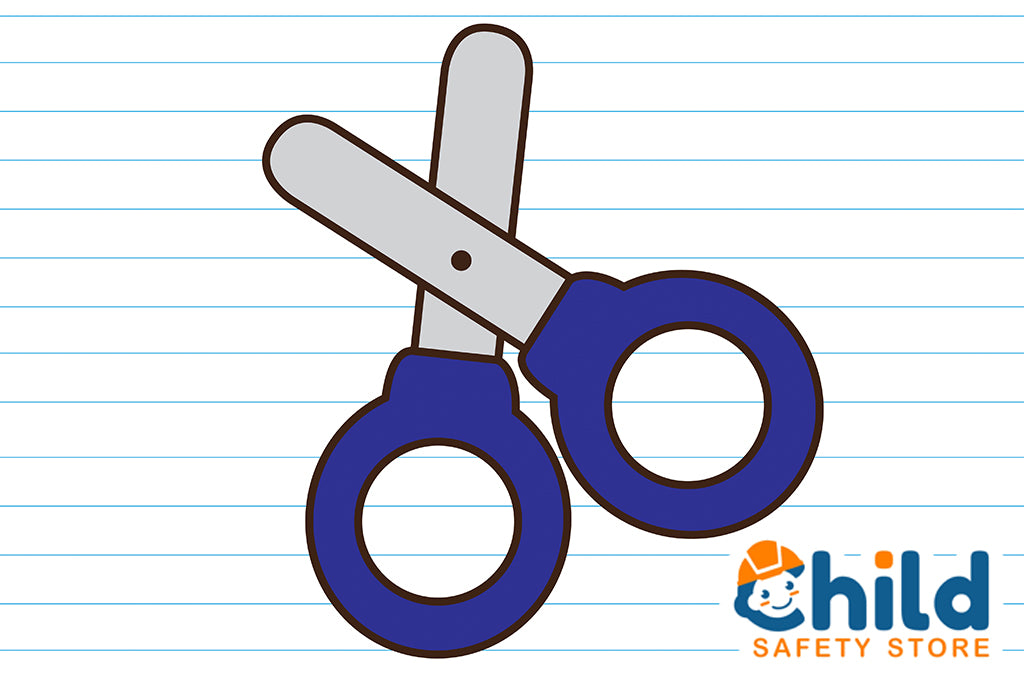
Scissor Safety Tips for Kids
Scissor safety is important, especially for young children. For parents and grandparents alike, we strive to foster creativity and independence. That begins at a young age. To encourage these skills, scissors often become a main player in craft projects and assist with hand-eye coordination.
Of course, little learners likely aren’t ready for adult-sized scissors. As many parents realize, the combination of sharp blades and little fingers can be dangerous. Fear not! We’ll go over some scissor safety tips for kids that should help to minimize these concerns.
Soon your children will be snipping away safely and embracing their artistic skills.
Scissor Safety Tips for Kids Stats with Choosing the Right Scissors
According to the CDC, preschoolers aged three-to-five may begin using safety scissors. When it comes to scissor safety tips for kids, picking the right scissors is critical. Safety is an important part of the joy of introducing your little one to the world of arts and crafts.
To start, look for child-safe scissors with rounded tips and blunt edges to reduce the risk of accidental cuts. These scissors are specifically designed for small hands and offer an added layer of protection during use.
Teach the Proper Holding Technique
Show your child how to hold the scissors correctly to minimize the risk of accidents. Encourage them to use their thumb and middle finger to grip the scissors' handles, while the index finger rests on the blade's side. This "thumb-up" position gives them better control and promotes safe cutting.
Create a Safe Cutting Area
Designating a safe cutting zone is essential for minimizing potential hazards. Ensure the workspace is well lit and clutter free. Cover the table with a smooth, flat surface to provide a stable platform for their artistic endeavors. A non-slip mat can be an excellent addition to keep the workspace steady and secure.

This scissor safety tip goes hand-in-hand with our kitchen safety tips blog post. There are lots of ways to get hurt around sharp objects. Care should be taken to keep blades out of reach and avoid slipping.
Active Supervision is Always Important
While parents and grandparents strive to encourage independence, there are certain activities that still require careful supervision from caretakers. These include activities in the pool and playtime with water beads. Above all, never leave your child unattended during scissor activities. Adult active supervision is vital, especially when they are still mastering scissor skills. Be present to guide, answer questions, and lend a helping hand when needed.

Practice Makes Perfect
Start with simple cutting projects, such as cutting in a straight line, to build confidence and fine motor skills. Gradually progress to more complex shapes and lines. Offer praise and encouragement for their efforts, boosting their motivation to improve their cutting abilities safely.
Educate About Proper Scissor Use
Teaching your child the "dos" and "don'ts" of scissor usage is vital. Explain that scissors are not toys and should only be used for cutting paper or other approved materials. Emphasize the importance of never pointing or waving scissors near others to prevent accidents. Finally, be clear that scissors should only be used when an adult is watching.
First Aid Awareness
Despite all precautions, accidents can happen. Familiarize yourself with basic first aid procedures in case of minor cuts or scrapes. Keeping a well-stocked first aid kit at hand is essential for any household. Just be sure to keep those medicine cabinets locked up tightly!

Empowering your children to use scissors safely can be an enriching experience for both parent and child. By following these scissor safety tips for kids, you can foster their creativity while ensuring their wellbeing. Remember, patience and practice go hand in hand as your little ones embark on their artistic journey with scissors. Snip smartly, and let the creativity flow!
